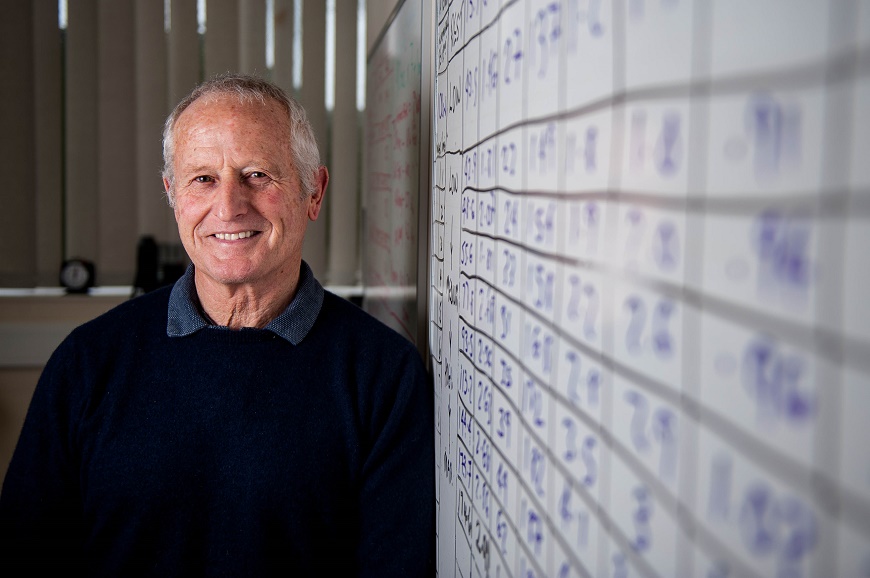UK (University of Wales Trinity St David) A decade of research and over forty scientific papers investigating the effects of activity and inactivity

Peter Herbert is an Associate Professor at the University of Wales Trinity Saint David’s (UWTSD) Centre for Health and Ageing at the University’s Institute of Management and Health and a world leading authority on fitness in the older generation.
Over the past decade Professor Herbert has published over 40 scientific papers investigating the effects of activity, and inactivity, on our lives as we age; and has presented this work in conferences worldwide that are focused on finding out the types of exercise that are most efficient in helping to stem the gradual decline in strength, power and aerobic capacity that occur with advancing years.
In his latest paper, published in Experimental Gerontology, he revealed how people in their late 60s can cut their biological age by up to 20 years through exercise alone.
“In non-athletes – i.e., most people – there is typically a 16 per cent decrease in aerobic capacity in your 50s, but a dramatic 26 per cent drop from your 70s onwards,” said Professor Herbert. “Since lower levels of cardiorespiratory fitness are strongly associated with an increased risk of cardiovascular disease and all-cause mortality, any way in which we can slow this decline would help to offset some of the effects of ageing.”
In another study awaiting publication, Professor Herbert and colleagues found that a single 20-minute weekly weight-training session was just as effective in building strength gains in older people than a traditional 40-minute workout with weights.
“We found that a 20-minute routine involving just three “multi-joints’ exercises — the leg press, the lateral pull-down, and the bench press — was sufficient to strengthen the whole body in half the time of a workout that used single-joint exercises such as bicep curl and leg curl,” he said.
“Those three multi-joint moves will cover everything as they involve pulling and pushing the upper and lower body, engaging triceps, biceps, back and chest muscles, hamstrings, quadriceps and glutes.” Strength gains between the two groups were similar, but the multi-joint exercise group took half the time to achieve.”
The University of Wales Trinity Saint David’s Centre for Health and Ageing offers a new way for men and women aged 50 and over to get fit and maintain a healthy lifestyle.
The Centre first opened as a direct response to the overwhelming amount of interest from the media and members of the public to the research of UWTSD’s Professor Herbert.
Professor Herbert’s PhD looked at methods of training for older men, proving that shorter, harder training sessions followed by longer recovery periods can have positive results on their fitness levels. He also recommends that a more moderate type of exercise can offer an alternative option to improve health and fitness.
As a highly experienced physiologist, Professor Herbert has a wealth of knowledge and experience of working with sportspeople of all ages from a wide range of disciplines, including rugby, boxing, and cycling. A former Strength and Conditioning coach with the Scarlets and the Wales national rugby team, he is also an extremely successful cyclist, having won a bronze medal at the World Masters Track Cycling Championship at 73 years of age and competed in Wales Ironman at the age of 76.
Irrespective of previous fitness levels or health, over 95% of those who have taken part in courses run at the Centre, have improved their current fitness status. Courses are now run for 6 weeks and provide everything a person needs to know about how to exercise sensibly and safely to enable them to join a gym or carry out their training at home or outdoors.
The Centre has much to offer the community. Firstly, they have staff who are experts in assessing and prescribing fitness, nutritionists to advise on dietary matters, and physical therapists who can work with those who have injuries or movement problems often experienced by the elderly.
How fit or healthy are you now?
Depending on individual requirements clients tend to be categorized into two groups.
Firstly, those who are already fit but wish would reach the highest levels possible, enter fun competitions such as Park Runs or even enter master’s events at local and national level.
Secondly, those who wish to improve their fitness, might be currently inactive and wish to reach a fitness level that enables them to carry out routine daily tasks, playing with the grandchildren or perhaps gentle walks on the beach or in the countryside.
It is important to remember that increased fitness also brings with it the ability to lower blood pressure and cholesterol levels, lowers the risk of many ageing conditions and extends a healthy lifespan for many more years.
The Testing Centre boasts the latest technology for measuring health, such as blood pressure, cholesterol, body composition, lung efficiency and stamina. It is seen as a health ‘MOT’ that will help you understand your current health, identify early any risks, and could help to avoid future potential problems.
The centre is also able to test all the important details that will be of particular interest to lifelong exercisers and serious athletes who aim to achieve the highest levels of conditioning, often to compete in master’s competitions such as running, cycling, swimming, tennis, squash, and even the long-distance triathlon, the Iron Man. This could include the measurement of muscle mass and body fat, aerobic fitness (VO2max), muscle strength and power.
Personalised Fitness programmes can be prescribed, following a consultation with senior staff to help you achieve your goals, whether it be good general health or the highest levels of fitness. The information provided will consider everyone’s personal situation. This could be the time you have to exercise, how serious are you in this new ‘journey’ you are taking, your motivation, and current fitness and health. Important too, is the accessibility of exercise facilities or the local environment for outside exercise.
